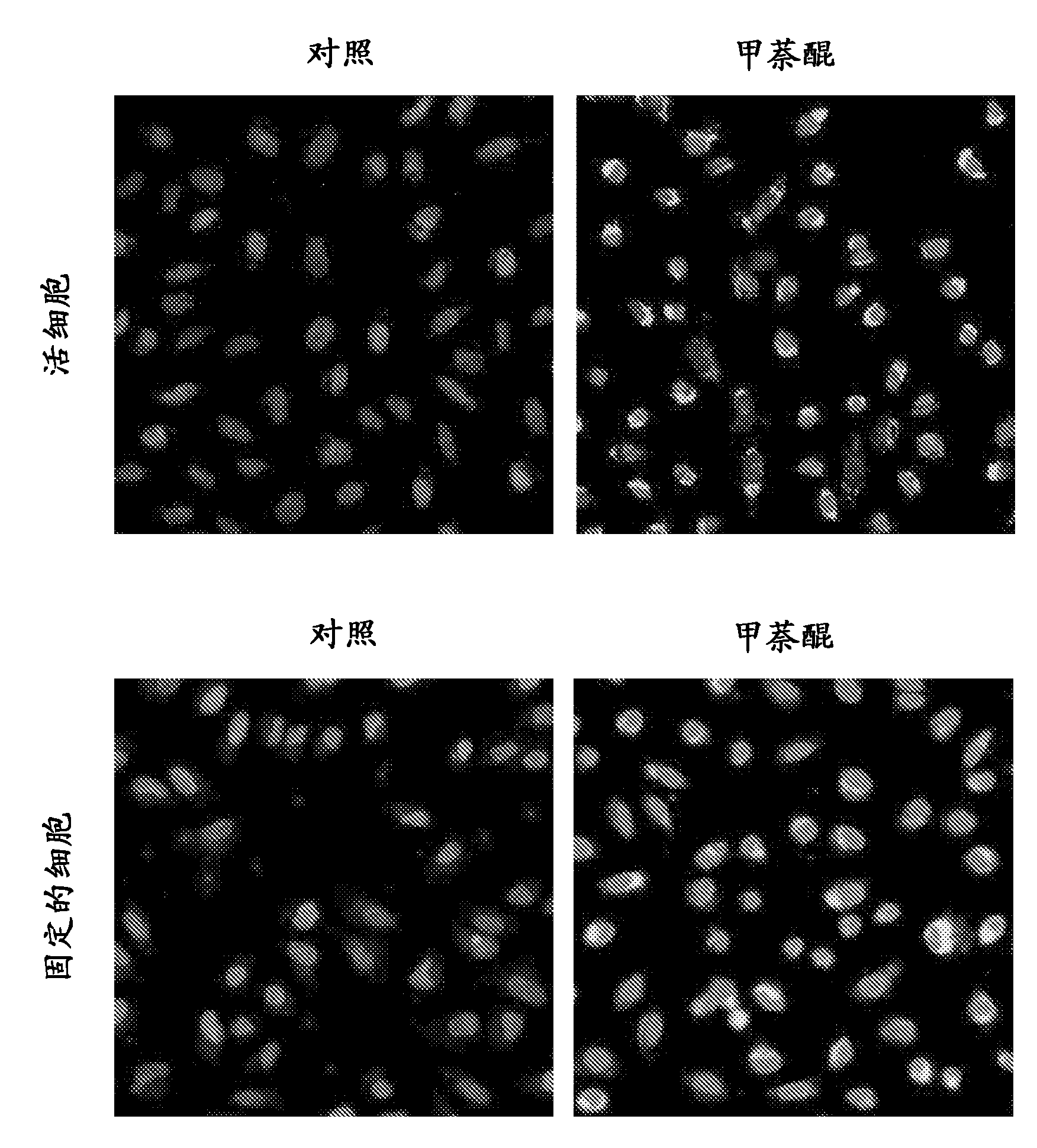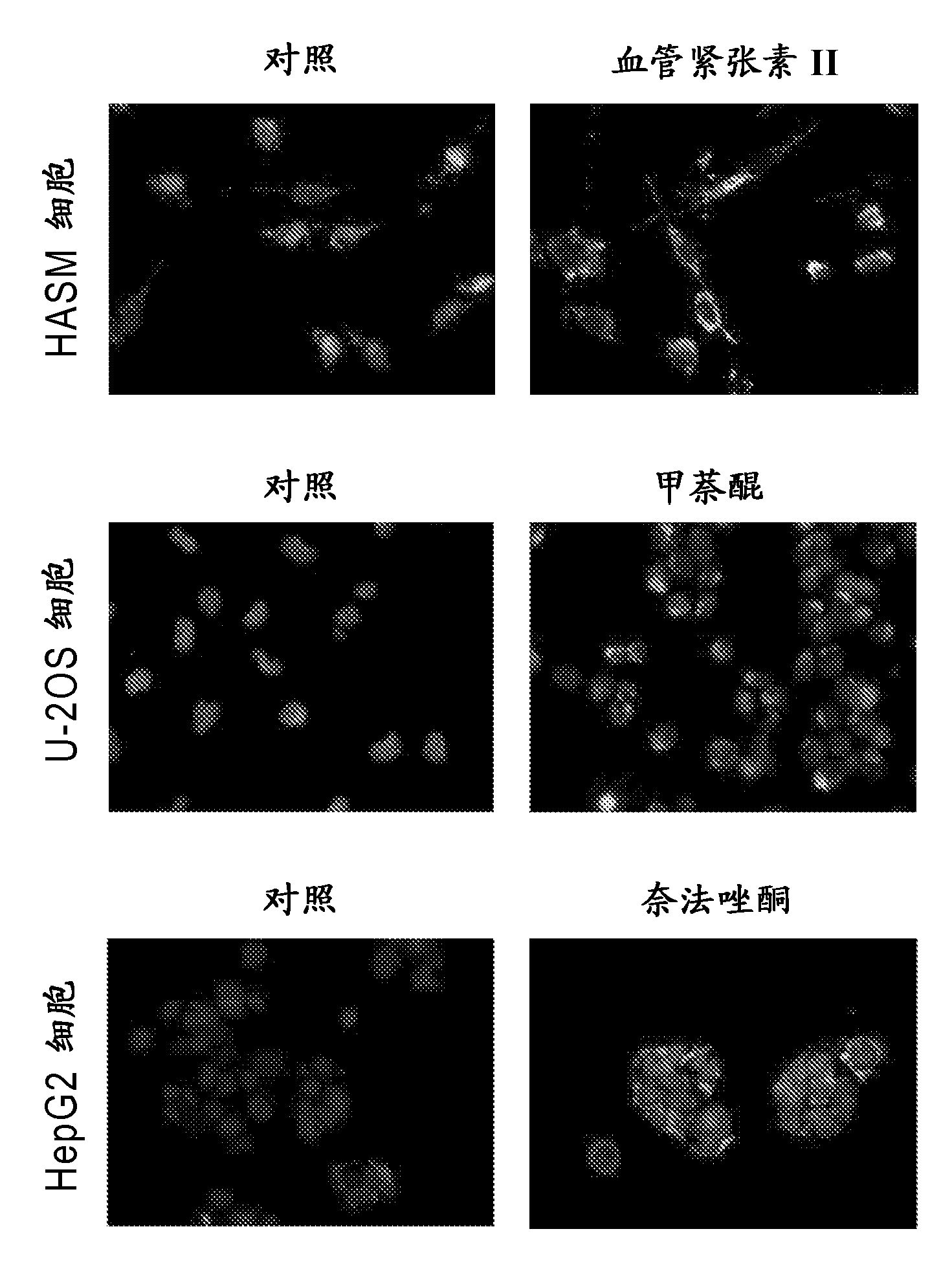Modified hydrocyanine dyes for the detection of reactive oxygen species
A dye compound, alkyl technology, applied in the direction of anthracene dyes, organic dyes, azo dyes, etc.
- Summary
- Abstract
- Description
- Claims
- Application Information
AI Technical Summary
Problems solved by technology
Method used
Image
Examples
Embodiment 1
[0284] Bovine pulmonary artery endothelial (BPAE) cells were grown overnight at a density of 7500 cells / well, treated with or without 100 μM menadione for 1 h, and then stained with 5 μM Red ROS probe for 30 min. Cells were then washed 3 times with 1X PBS and imaged using a Thermo Scientific Cellomics ArrayScan™ VTI HCS Reader (Thermo Fisher Scientific, Pittsburgh, PA) after staining with Hoechst nuclear stain. Menadione-treated cells showed a positive reaction due to the reactivity of the red ROS (Red ROS) probe to reactive oxygen species generated in the cells (see Figure 1).
Embodiment 2
[0286] RAW macrophages were plated in a 96-well plate at a density of 10,000 cells / well, treated with 500 ng / ml lipopolysaccharide (LPS) for 18 h, and then stained with 5 μM red ROS (Red ROS) probe for 30 minutes . Cells were washed 3 times with 1X PBS, stained with Hoechst nuclear stain, and then imaged using Thermo Scientific Cellomics ArrayScan™ VTI HCS Reader. LPS-treated cells showed enhanced fluorescence as a result of the reactivity of the red ROS (Red ROS) probe to reactive oxygen species produced in LPS-treated cells; no signal was seen in the control cell population ( See Figure 2).
Embodiment 3
[0288] Human hepatocellular carcinoma (HepG2) cells were plated at a density of 7500 cells / well in collagen I-coated 96-well plates. Cells were then treated with 50 μM nefazodone for 24 h and stained with 5 μM red ROS (Red ROS) probe for 30 min. Cells were washed 3 times with 1X PBS, stained with Hoechst nuclear stain, and then imaged using Thermo Scientific Cellomics ArrayScan™ VTI HCS Reader. There was increased fluorescence intensity after nefazodone treatment, indicating that the red ROS (Red ROS) probe was reacting with nefazodone-induced reactive oxygen species in the cells (see Figure 3).
PUM
 Login to View More
Login to View More Abstract
Description
Claims
Application Information
 Login to View More
Login to View More - R&D
- Intellectual Property
- Life Sciences
- Materials
- Tech Scout
- Unparalleled Data Quality
- Higher Quality Content
- 60% Fewer Hallucinations
Browse by: Latest US Patents, China's latest patents, Technical Efficacy Thesaurus, Application Domain, Technology Topic, Popular Technical Reports.
© 2025 PatSnap. All rights reserved.Legal|Privacy policy|Modern Slavery Act Transparency Statement|Sitemap|About US| Contact US: help@patsnap.com



